Welcome to Asian Photography Magazine’s latest smartphone camera review. Today, we’re focusing on the camera capabilities of two recently launched mid-range smartphones: the OnePlus 12R and the Redmi Note 13 Pro+. Both models are priced competitively, with the OnePlus 12R starting at ₹39,999 and the Redmi Note 13 Pro+ at ₹31,999.
Interestingly, the OnePlus 12R hasn’t seen any updates to its camera compared to its predecessor, the 11R. However, it now features the powerful Snapdragon 8 Gen 2 processor and some under-the-hood improvements, which could enhance its camera performance. On the flip side, the Redmi Note 13 Pro+ boasts a significant camera upgrade, moving from a 50 MP to a 200 MP main camera. It also comes equipped with the MediaTek Dimensity 7200-Ultra processor, promising better overall performance.
In this review, we’ll dive into which smartphone offers the better camera experience for consumers looking for quality photography without breaking the bank. Let’s find out which device takes the lead in the mid-range camera showdown.
Camera Setup
OnePlus 12R
- Wide: 50 MP, f/1.8, 24mm, 1/1.56″, 1.0µm, PDAF, Laser AF, OIS
- Ultra-Wide: 8 MP, f/2.2, 16mm, 112˚, 1/4.0″, 1.12µm
- Macro: 2 MP, f/2.4
- Rear Video: 4K@30/60fps, 1080p@30/60/120/240fps, gyro-EIS, OIS
- Front: 16 MP, f/2.4, 26mm, 1/3″, 1.0µm
- Front Video: 1080p@30fps, gyro-EIS
Redmi Note 13 Pro+
- Wide: 200 MP, f/1.7, 23mm, 1/1.4″, 0.56µm, multi-directional PDAF, OIS
- Ultra-Wide: 8 MP, f/2.2, 120˚
- Macro: 2 MP, f/2.4
- Rear Video: 4K@24/30fps, 1080p@30/60/120fps, gyro-EIS
- Front: 16 MP, f/2.4
- Front Video: 1080p@30/60fps
Daylight Main Camera
The OnePlus 12R has a 50 MP Sony IMX 890 camera, while the Redmi Note 13 Pro+ features a 200 MP main camera. Despite these differences, both phones produce images with a similar quality of 12.5 megapixels. The Redmi’s photos look more true to life, and the OnePlus’ photos are brighter and more colourful, which might be more appealing to some people, though I personally prefer the more natural look of the Redmi.

When it comes to how clear and detailed the photos are, both phones are pretty much the same. However, because the OnePlus makes images more vibrant, they can seem a bit sharper. The OnePlus also does a better job with HDR, making photos have better contrast and making colours look warmer and more inviting. Additionally, the OnePlus captures skin tones more realistically, while the Redmi tends to lighten them a bit too much.
Daylight Ultra-Wide Camera
In the ultra-wide camera category, both phones are equipped with an 8-MP sensor and produce images at this resolution. The pictures from both devices are warm, vibrant, and pleasing to look at. However, the Redmi sometimes shows slight colour fringing. On the other hand, the OnePlus occasionally suffers from over-sharpening, leading to a loss of detail in shadows and highlights in some images. Despite these minor issues, the performance of the ultra-wide cameras in both phones is quite similar, leaving little to differentiate between them.
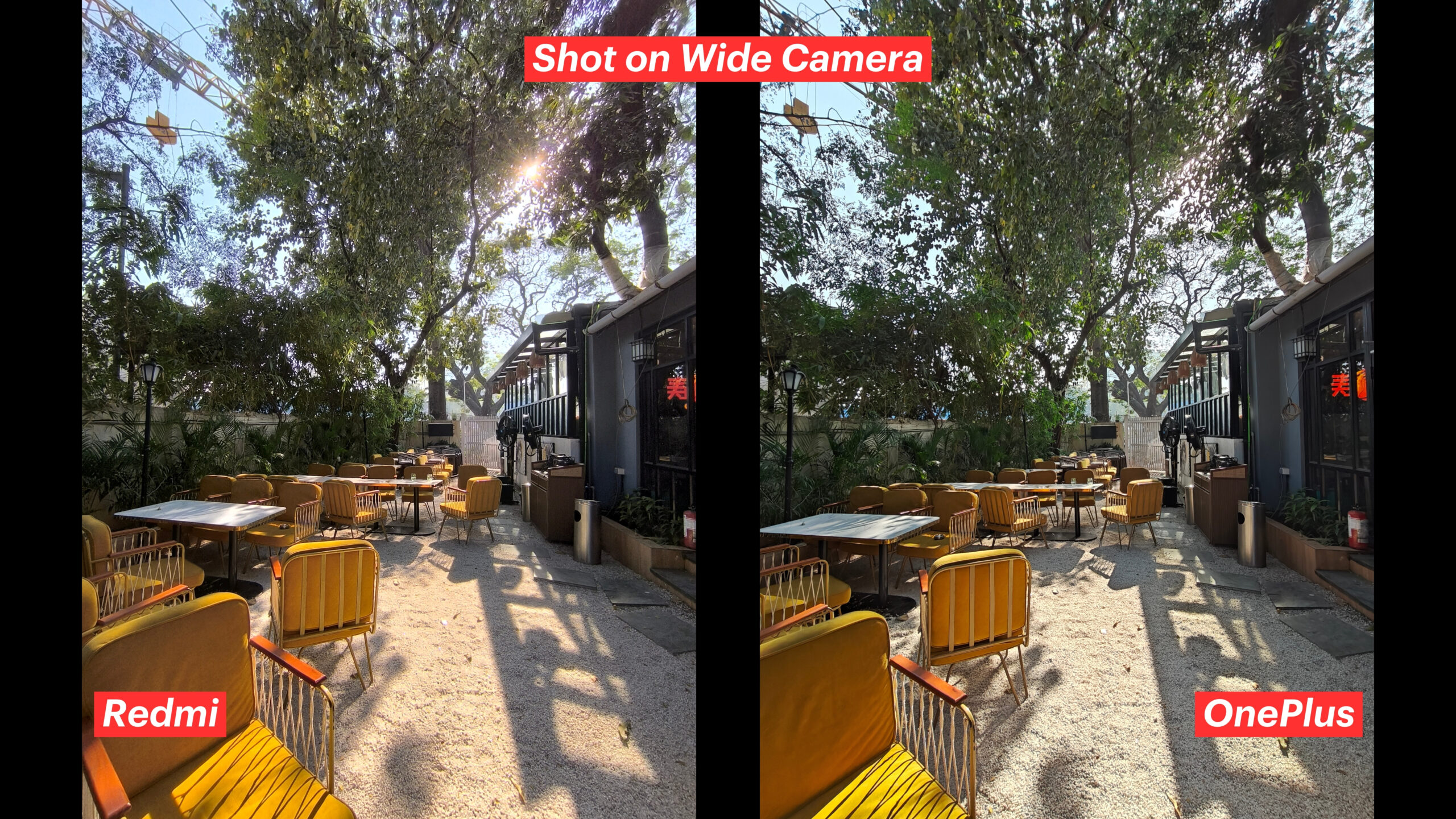
Daylight Telephoto Camera
Both phones, the OnePlus and the Redmi, don’t have a special zoom camera, so they zoom in using their main camera and make the picture smaller to fit. The OnePlus can zoom in 2X, 5X, and 10X, while the Redmi does 2X, 4X, and 10X zoom. Despite this, both phones still produce photos that are 12.5 megapixels in size.
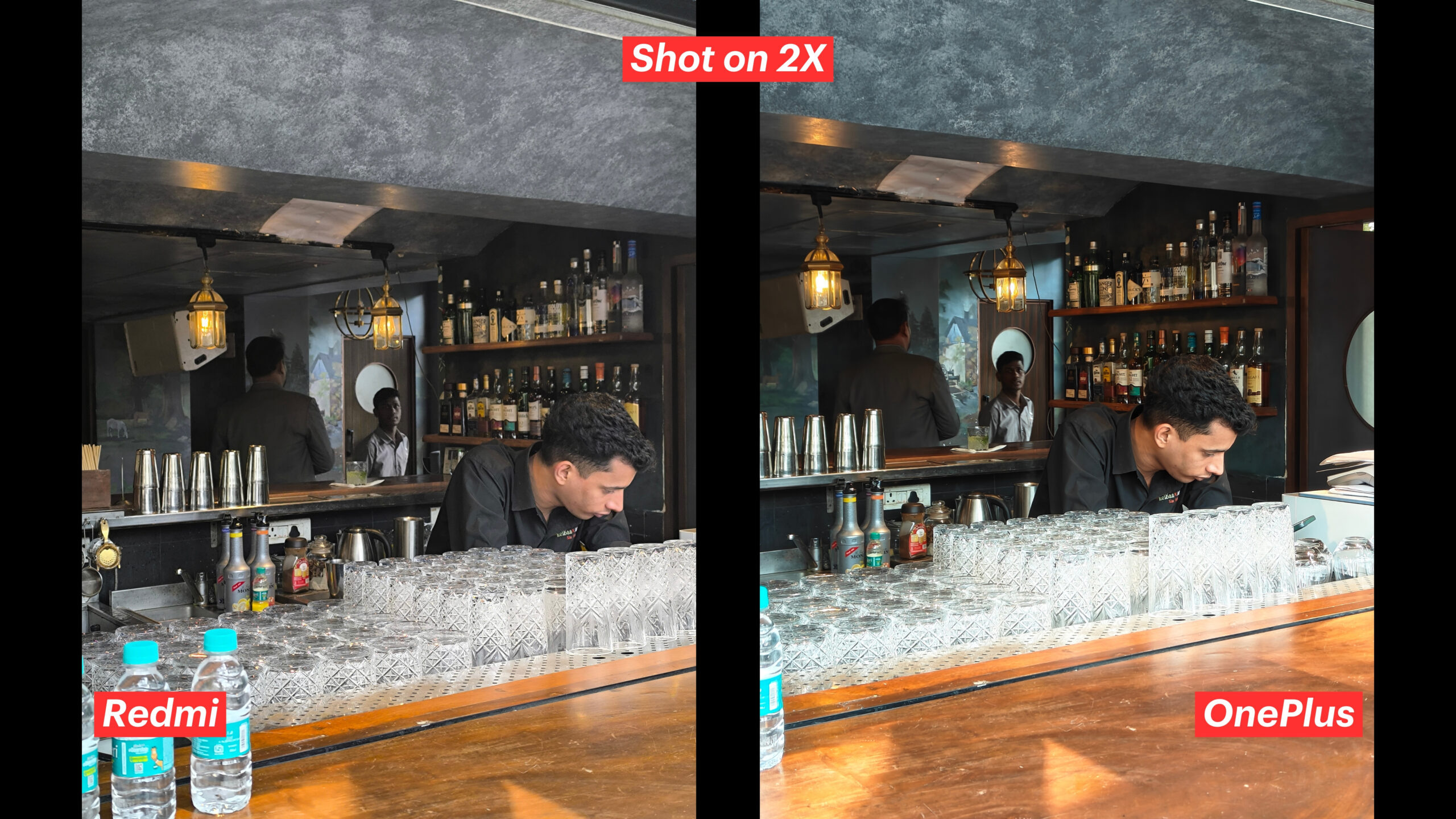
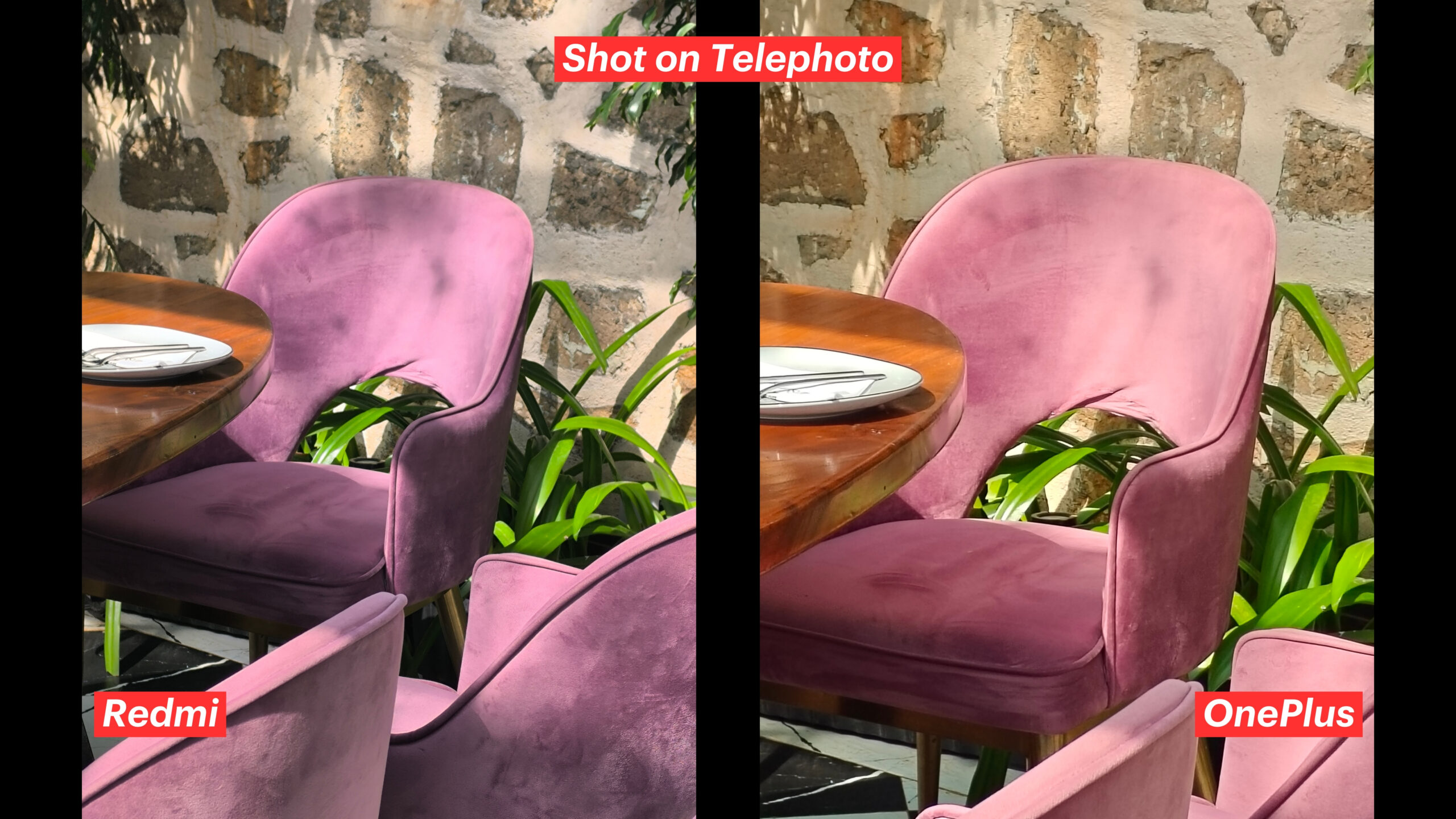
When zooming up to 5X, the OnePlus takes pictures that look warmer and more colourful, but the Redmi’s photos are clearer and sharper. This difference is even more noticeable when you zoom in more. At 10X zoom, thanks to its 200-megapixel sensor, the Redmi captures images that are much sharper and detailed, while the OnePlus photos show a lot of graininess.
Lowlight Main Camera
When it comes to taking pictures in low light, the quality of the photos from the main camera changes a lot compared to daylight. The Redmi’s pictures look yellowish, too bright, and the colours are too warm. On the other hand, the OnePlus takes pictures that look more real and gentle, which makes them nicer to look at. The OnePlus pictures also have more contrast, making them stand out more. However, just like in bright light, the Redmi pictures are sharper and have more details than the OnePlus pictures.

Lowlight Ultra-Wide Camera
In low light, the Redmi’s photos have a yellow tint, while the OnePlus photos lean slightly red. However, the Redmi’s images show noticeable distortion, making the OnePlus the better choice for clearer pictures. The OnePlus also captures colours that look more natural. When it comes to details and sharpness, both phones perform almost the same, offering very similar quality.

Lowlight Telephoto Camera
In low light conditions using zoom, the quality difference between the cameras becomes clearer. The OnePlus doesn’t capture details as sharply as the Redmi does. However, the OnePlus photos look more pleasing and natural, while the Redmi photos have a yellow tint and are more vivid than the actual scene.
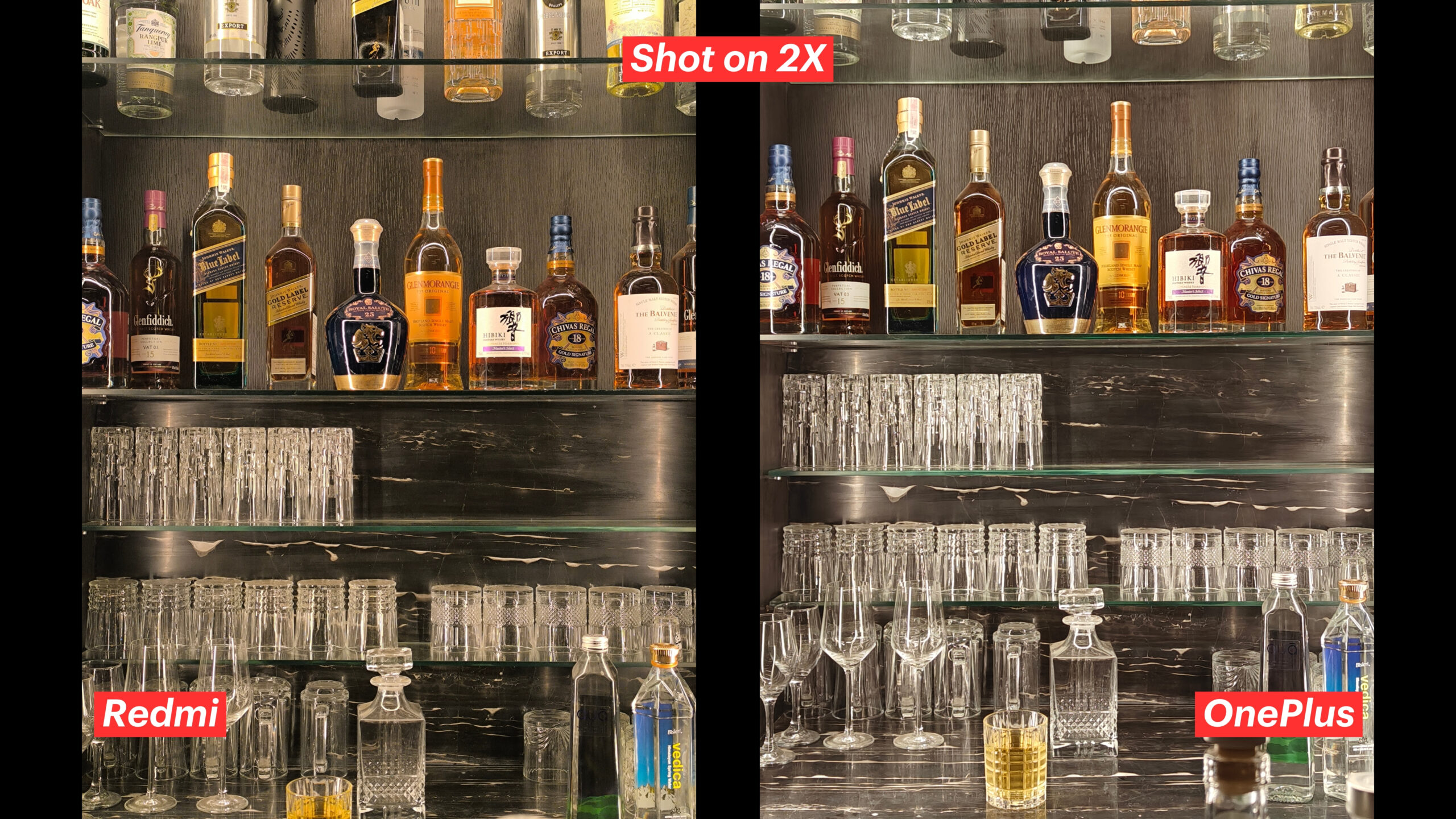
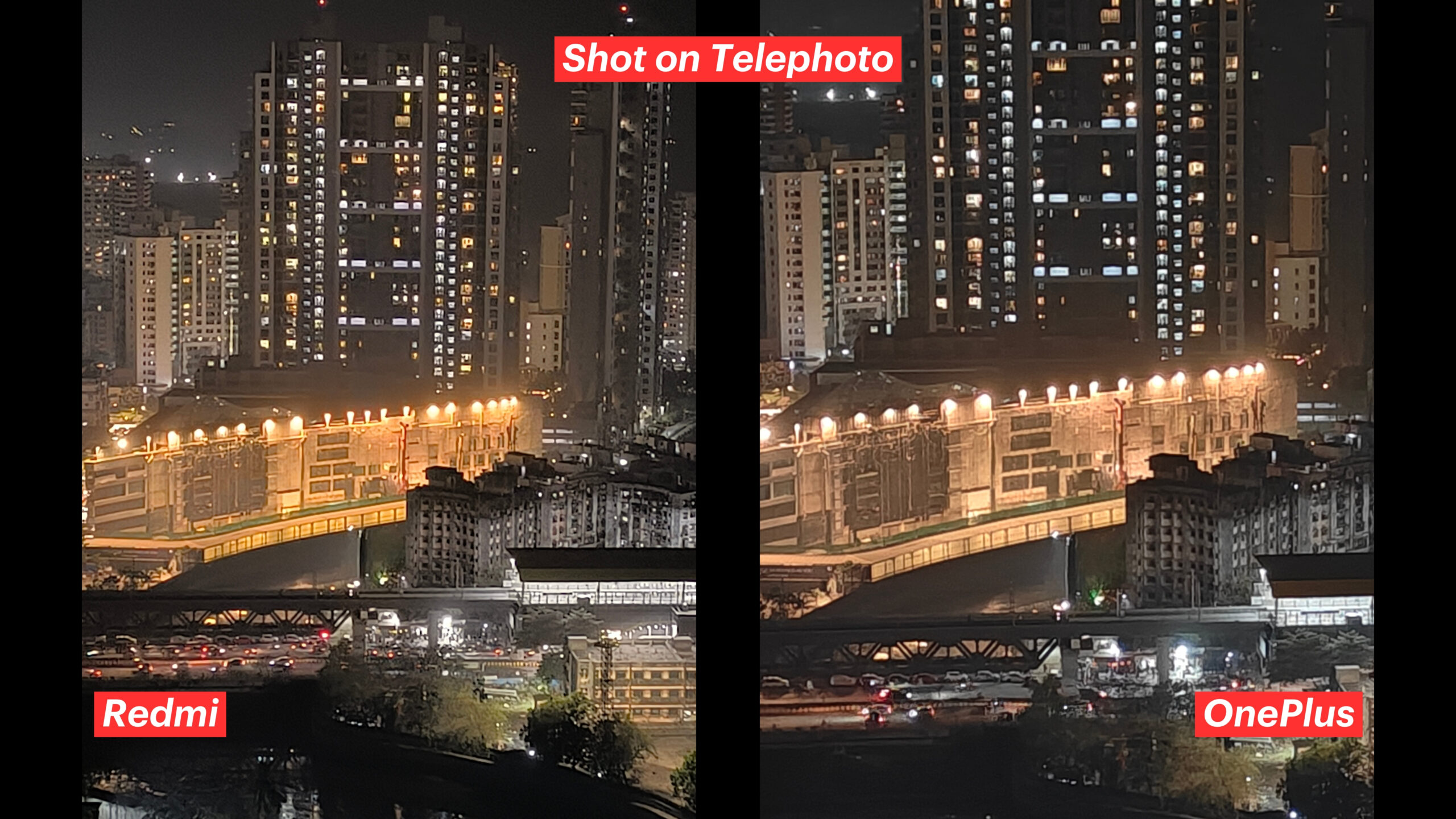
Portrait
When it comes to taking portraits, the OnePlus phone does a better job. The pictures are more colourful and vibrant, making them more appealing to look at. They also have a warmer tone, while the Redmi phone’s photos have a slight blue tint. If you zoom in, you’ll notice that the images from the OnePlus are clearer and more detailed. Both phones are pretty good at figuring out where the edges of objects are, though.
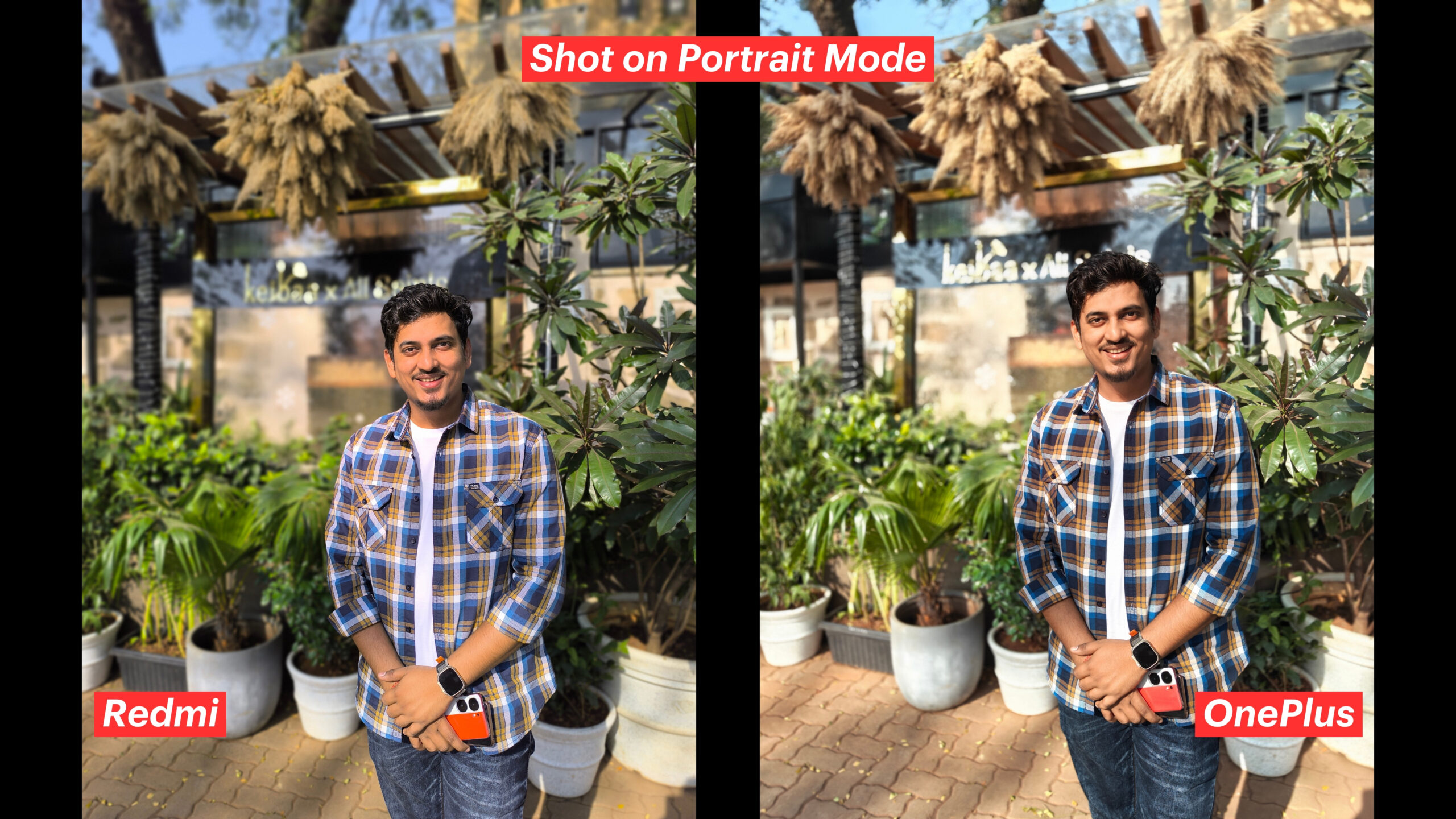
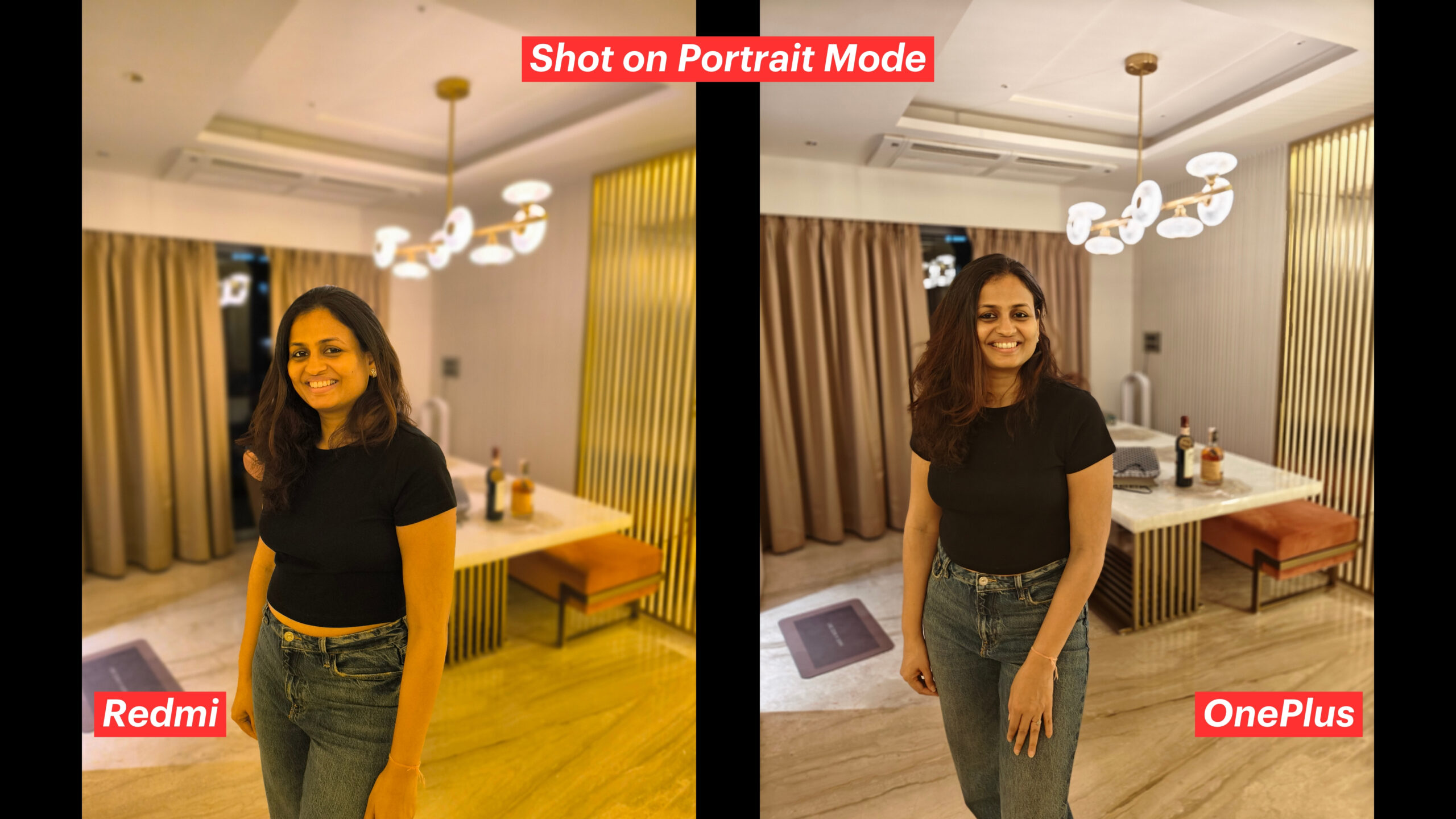
In low light situations, the OnePlus phone still takes better pictures, showing off more detail and contrast. The Redmi phone’s pictures tend to have a reddish colour on people’s skin. Also, the OnePlus is better at recognizing edges in these conditions.
Macro
Honestly, I don’t see the point of including a 2-MP macro camera in these phones. It feels outdated, and it doesn’t really add much value. I understand that brands want to offer a triple camera setup at an affordable price, but it would be better if they included features that are actually useful.
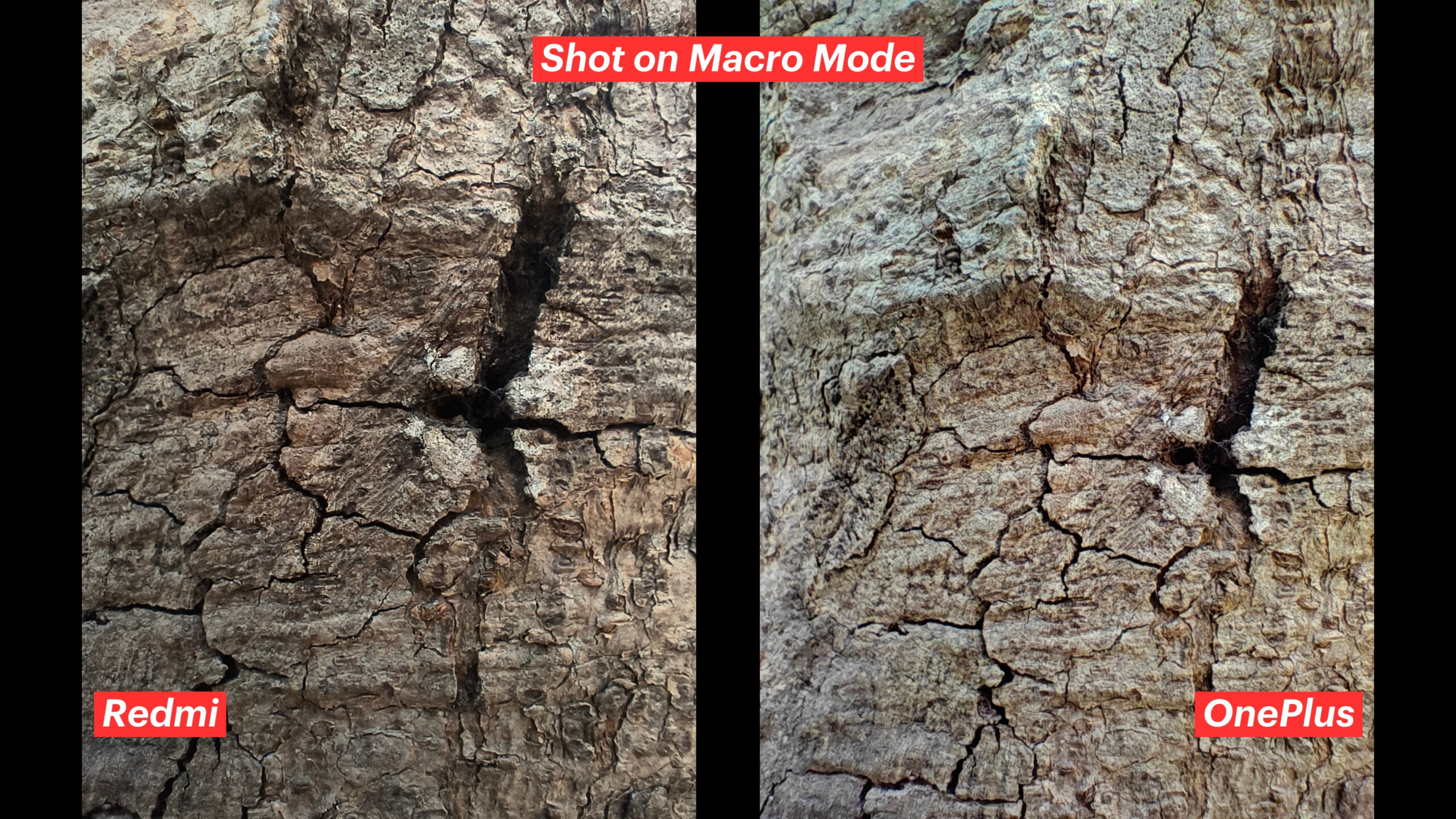
From my experience, the image quality from these macro cameras is just average. They’re okay for basic use, but I wouldn’t recommend relying on them for macro photography.
Front Camera
Both phones have a 16 MP camera for selfies. The OnePlus phone takes more natural-looking photos, while the Redmi phone’s pictures look a bit yellow in dim light. Also, the Redmi tends to make skin look smoother in photos, but the OnePlus provides sharper contrast.
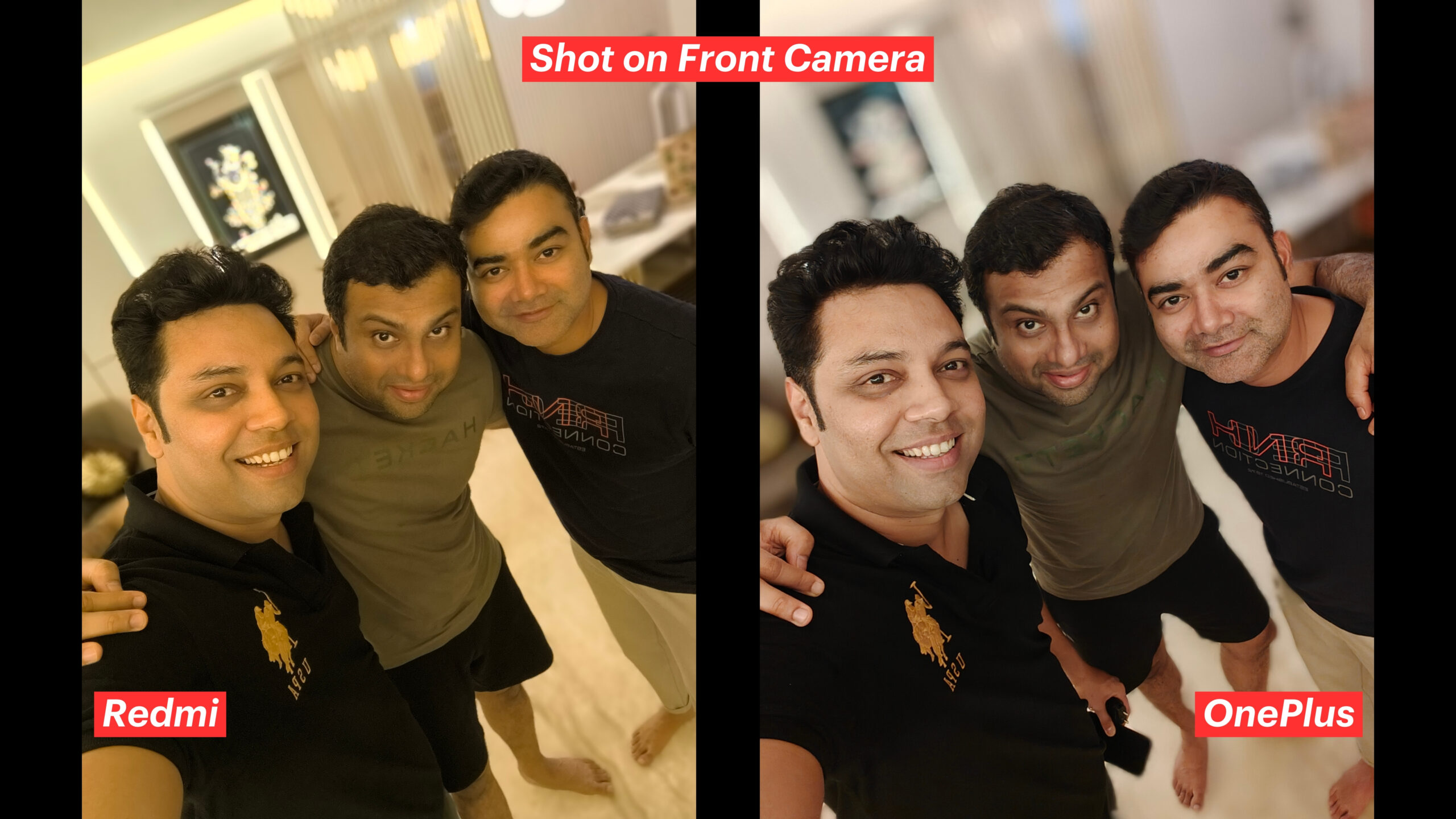
Video
When recording 4K videos at 30 FPS with the back cameras, the OnePlus phone clearly outperforms the Redmi. The colours in the OnePlus videos are brighter and more eye-catching. Plus, the OnePlus videos are smoother and have better contrast. On the other hand, the Redmi’s videos sometimes show burn marks, and when shooting in low light, there are noticeable flares and ghost-like effects. Overall, the OnePlus delivers superior video quality.
Conclusion
When comparing these phones, I initially thought the OnePlus 12R wouldn’t perform well in photography because it has the same camera setup as the 11R, especially since the Redmi has introduced an upgraded main camera. However, the OnePlus 12R actually offers more consistent camera performance. Additionally, its software, OxygenOS, provides a smoother and more optimized experience, making it worth the extra cost.
So, if you’re deciding which phone to buy, the OnePlus 12R not only has superior cameras but is also the better choice overall.
Text and Images by Bhavya Desai
